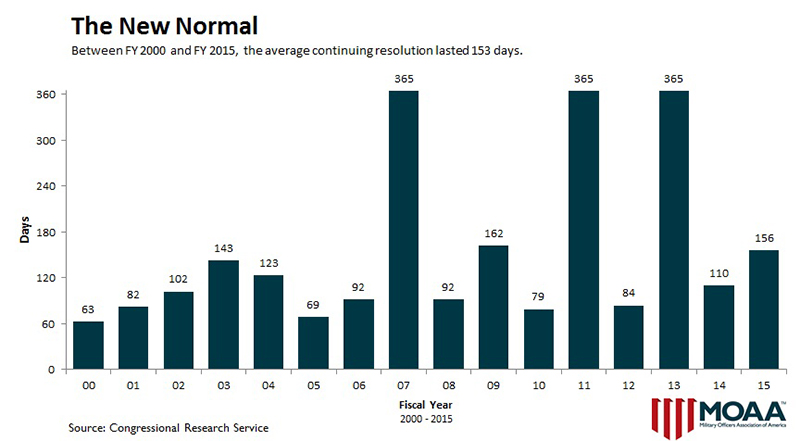September 18, 2015
With less than seven legislative working days between now and the end of the fiscal year, Congress appears unlikely to complete work on its annual spending bills in time. Without a compromise, there could be another government shutdown.
To prevent a shutdown, it’s likely Congress will pass some sort of continuing resolution (CR) to keep the lights on.
Here are three things you need to know about continuing resolutions.
1. Even without a continuing resolution, not everything stops.
In the event of a shutdown, “nonessential” government functions will shutter, but that doesn’t mean everything will close.
Agencies protecting life, limb, and property will remain open. That means the military will continue to work – without pay – but civilian staff may have to stay home.
Programs codified in existing statute, like military retired pay and Social Security, will continue uninterrupted.
However, anything considered “discretionary,” like defense spending and processing of new VA disability and Social Security claims, will be halted.
2. CRs aren’t that uncommon.
Unfortunately, CRs aren’t uncommon. The last time Congress passed all of its annual appropriations bills in time was almost 20 years ago with the FY 1997 budget. CRs can last for as little as a day or as long as an entire fiscal year.

3. CRs are costly.
CRs create massive inefficiencies for the government. Every time Congress heads towards a CR, federal agencies and departments have to spend time creating guidelines for offices and develop new spending plans.
CRs usually contain provisions stipulating that money can only be spent on what was approved the previous year.
Effectively, that means the government goes into a hiring freeze. Since agencies lack the authority to hire replacements, it also means potentially delaying termination of bad employees.
For the military, it means not spending money on new bullets, planes, or infrastructure. Delaying purchasing decisions on new weapon systems drives up per unit cost. Deputy Defense Secretary Bob Work recently lamented, “There is no organization on this earth that would be able to remain in business, operating under these conditions.”
On the military personnel side, CRs wreak havoc on force management. The services have to go to Congress to get special permission to provide bonus pays and incentives.
In an interview with Defense One, Air Force Chief of Staff Gen. Mark Welsh said DoD has the ability to maneuver for about three months under a CR, but any longer proves much more difficult. “It creates a lot of work, a lot of churn, and a lot of confusion for everybody involved.”
“Nobody is a fan of CRs,” said Welsh. “Nobody.”